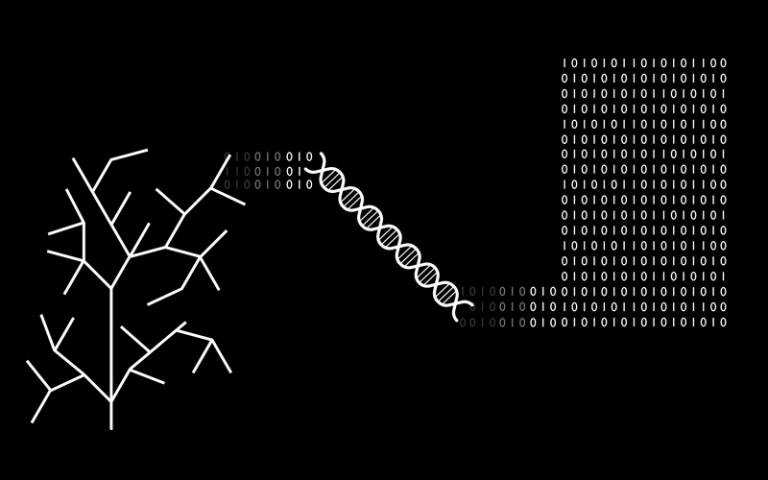 Research
Research

Subject
Evolutionary Transformation in Digital Architecture
First and second supervisors
Abstract
Throughout history, human beings have sought to grasp nature's working logic and apply acquired intelligence to artefacts, since it always has been the source of inspiration, solution, and creativity. For this reason, there is a comprehensive interrelationship between the philosophy of nature and architecture. During the initial stages of human evolution, the relationship between the philosophy of nature and architecture was shaped by primitive man's elementary understanding. Towards the twenty-first century, this network has been further developed by establishing numerous relationships with theology, mathematics, geometry, physics, chemistry, biology and several other disciplines. Today, this extensive network-chain can be understood only by interpreting interdisciplinary connections.
Natural philosophers and scientists generally considered all living creatures as static, unchanging and non-transformable beings. Even if there were some speculations about species evolution, nobody could develop a valid scientific explanation until 1859. After Charles Darwin's revolutionary work, living beings have started to be comprehended as changing, evolving, and developing dynamic entities. Evolution theory has become the interpretive power of biology after successive years of discussions and objections among scientists. The working principle of evolutionary mechanisms has begun to be explained at the genetic code level in sync with the developments in genetics. Afterwards, simulating nature's evolutionary logic in the digital interface has become imaginable with computational systems' advancements. Ultimately, knowledge of evolution began to be utilised in digital architecture both as theoretical standpoints and design methods since the 1990s.
This study aims to evaluate the evolutionary transformation in digital architecture since the 1990s. The main objective is to reveal how evolutionary nature's knowledge transformed into a digital interface and utilised by architectural designers after outstanding developments in genetics and digital/computational tools. Beyond technical details, used technologies and practical usages, the reseach explores fundamental theoretical, philosophical and scientific concepts that have been employed within historical and cultural backgrounds. The study's envisaged methodology is a comparative analysis upon the theoretical concepts, critical limits, cultural/historical backgrounds and working principles of evolutionary understanding in digital architecture. In this context, the research's expected result is an intellectual, comprehensive and comparative understanding of digital architecture's evolutionary transformation.
Biography
Melih Kamaoğlu is an architectural theorist, researcher and writer. He received his BArch in 2017, and MArch in 2020 with the thesis titled ‘Evaluation of Evolutionary Architecture Through The Relationship Between Philosophy of Nature and Architecture’ from Karadeniz Technical University (KTU). He worked as a research and teaching assistant at Eskişehir Technical University (ESTU) between 2018 and 2020, where he was a tutor of Basic Design, Introduction to Architectural Design and Architectural Studio courses.
He is currently pursuing his PhD in Architecture and Digital Theory at The Bartlett School of Architecture, UCL. His primary research interests include architectural theory/history, digital theory, evolution theory and philosophy of nature. His doctoral research is funded by the Turkish Ministry of National Education.
Publications
- Kamaoğlu, M. (2019). 'Discussion of "Placelessness" and "Acontextual" Concepts Through Jean Baudrillard's Simulation Theory', LIVENARCH 6th International Congress: Replacing Architecture. Prof. Dr. Osman Turan Culture and Congress Center, September 25-28. Trabzon: KTU Printing Center, 34-45.
- Kamaoğlu, M. (2019). 'Reflections of the 'Will to Power' on Architecture in Nietzsche's Philosophy', ARCHTHEO19 / XIII. International Conference on Theory and History of Architecture. Nippon Hotel Meeting Hall, October 25. Istanbul: DAKAM Publishing, 11-18.
- Kamaoğlu, M. & Sağlam, K. 2019. ‘Değişen Turizm Koşullarının Yapılı Çevre Üzerindeki Etkisinin Değerlendirilmesi: Hamsiköy Mahallesi (Assessment of the Impact of Changing Tourism Conditions on the Built Environment: Hamsiköy Neighborhood)’, IV. International Conference of Urban Studies Economy and Urbanization. TEPAV, October 16-19. Ankara: Ideal Kent, 892-909.
Funding
Turkish Ministry of National Education
Image: Theoretical foundations of evolutionary transformation in digital architecture, by Melih Kamaoğlu. From left to the right; evolution theory, genetics and computation.
 Close
Close

